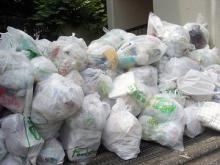Tell Dell to Ditch the PVC
- Its composition is carcinogenic, explosive, and highly toxic
- Its production releases harmful chemicals into our environment; in fact, it is known as the most environmentally toxic plastic
- It creates dioxins, the most harmful chemicals known on Earth, when burned
- Known as “the poison plastic,” PVC
- PVC released in the air, ground, water, and homes has been linked to causing cancer, hormonal disruption, immune system problems, and more
It’s not a very nice plastic!
The thing is, it’s not even necessary in most products. We can make them without PVC! One product that especially does not require PVC is the computer. After being pressured by consumers for safer, healthier computers and other gadgets, the electronics industry has been working on stopping the use of PVC—as well as other harmful chemicals—from their products. Brominated flame retardants (BFRs) are another unnecessary yet often used chemical being phased out. BFRs are also highly toxic, and have been building up in the bodies of animals and humans more increasingly every year, since most products—from clothing to bed sheets to furniture—contain them. Like PVC, BFRs harm the environment and cause many adverse health defects.
One computer company, however, simply refuses to make any progress. Dell has been actually backtracking on its promises to stop using PVC and BFRs in its products. Even though most of Dell’s competitors have been happy to embark on a path toward cleaner, safer, more healthy computers that have less effect on people and the environment, Dell seems to think that it’s perfectly okay to continue polluting both the planet and our bodies with its merchandise.
Please tell Dell CEO Mike Dell to keep his word and phase out the use of these harmful chemicals today. You can also call him at 800-293-3942. Be sure to ask for someone about phasing out toxic chemicals.
Until Dell does get on the wagon toward safer, healthier products, please consider boycotting them as well. There is no need to put yourself or your family at risk—not to mention many other people when Dell products are both created and disposed of—when so many safer alternatives exist.








